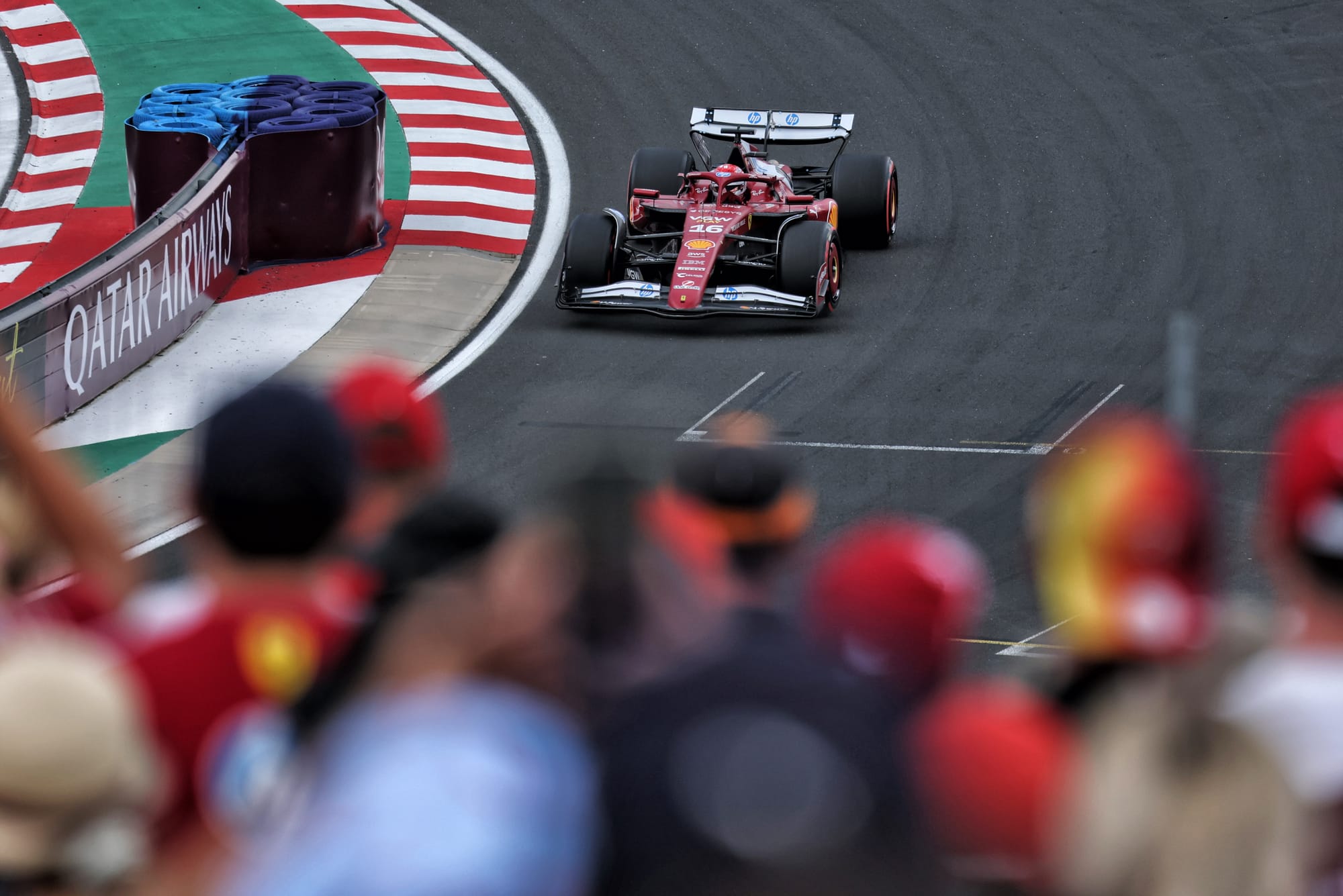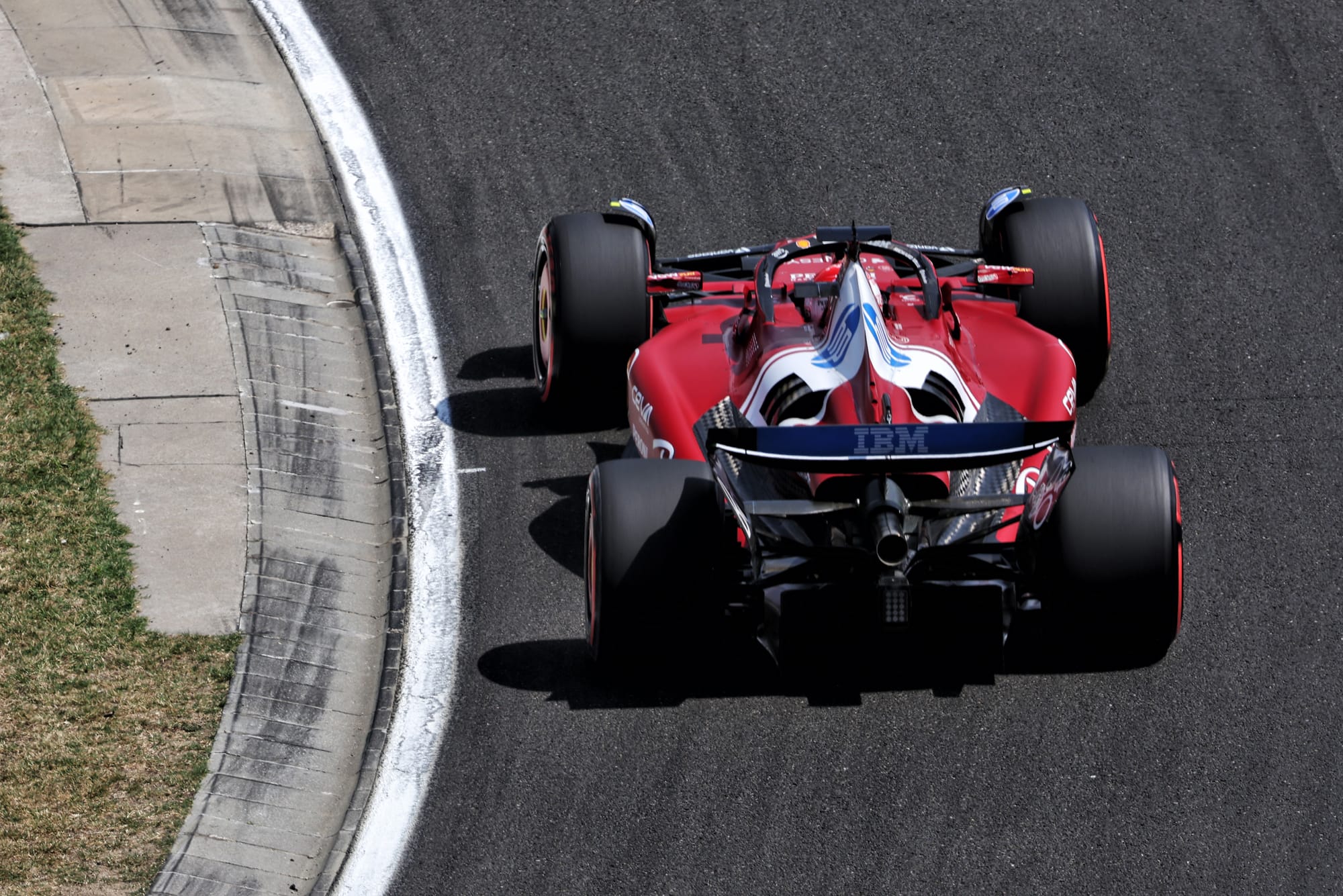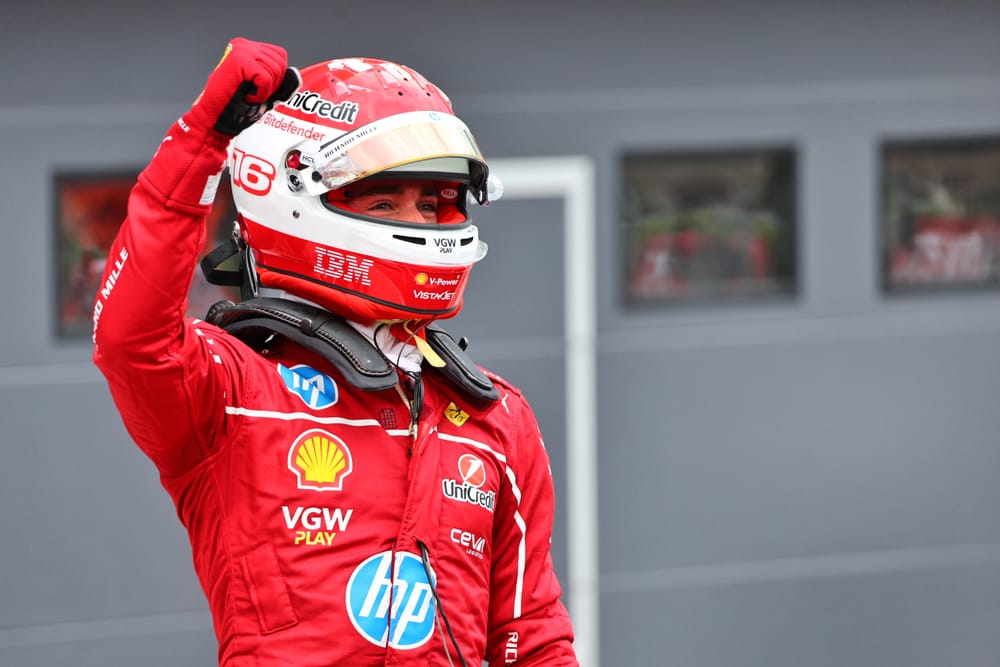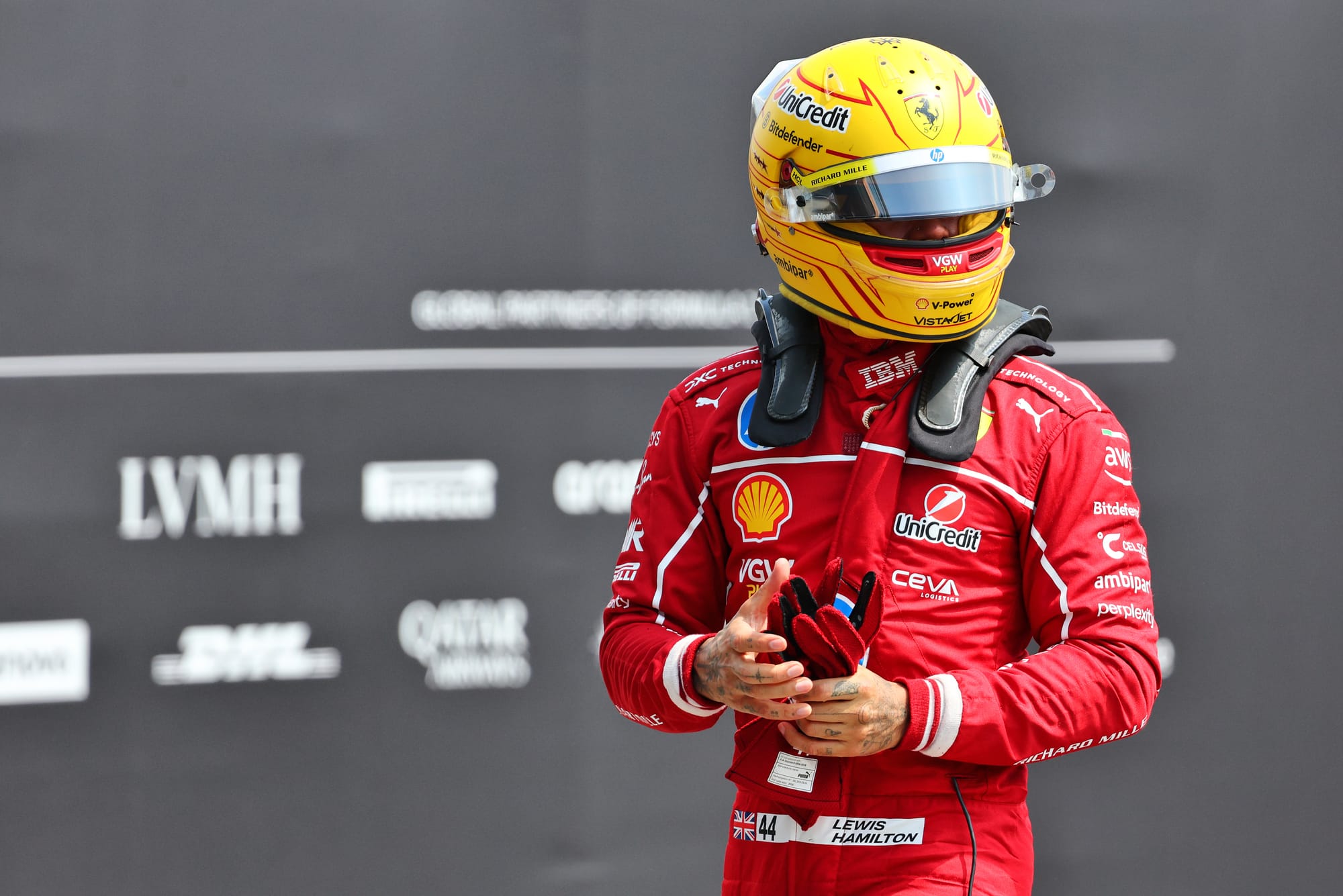Even if Charles Leclerc had ended up with the third place he anticipated when he finished his final lap in qualifying at the Hungaroring, rather than his 27th Formula 1 pole position, the point would have been made.
His magic touch on Saturdays has returned, and that’s all about the effect Ferrari’s recent upgrades have had on him, not in terms of pace but the feel he says now allows him to “play with the limits”.
That’s something he has traditionally done brilliantly in qualifying, meaning he is capable of dragging the absolute maximum out of the machinery thanks to his phenomenal feel and sensitivity to traction.
Yet just a month ago, speaking at Silverstone, Leclerc admitted to “not doing the job” in qualifying.
The Race’s analysis of his performances after that event showed that while he’d performed well in qualifying during the first 12 rounds, there were none of the extraordinary one-lap moments you’d expect from him.
He was good, but not great, when it came to single-lap pace.

Then Ferrari’s rear suspension upgrade appeared at Spa last week. There, he qualified fourth for the sprint and third for the main race, on Saturday shading Max Verstappen in a Red Bull that was still quicker even carrying extra wing in anticipation of race-day rain.
In Belgium, Leclerc was quietly confident about the gains he felt in terms of raising his own qualifying potential, but after taking pole position in Hungary he was emphatic. The Ferrari allows him to be back at his best in qualifying.
“Before Spa, I had to set up the car in a very, very extreme way to try and extract something in qualifying,” said Leclerc. “However, it was making everything very inconsistent and I was struggling to be on top of the car all the time.
“With the upgrade, it helped me to be a bit more in a reasonable window car-wise, and it feels like it's fitting a little bit more the way I drive in qualifying when I start pushing.
"And that's really important, because since the beginning of the season I've been struggling, particularly in quali, which is normally one of my strengths. But since Spa it's coming back towards me a little bit.”
So what exactly does Leclerc mean by this?
Clearly, the upgrade has unlocked more pace, but there’s a more significant part of this equation.
As explained elsewhere, circumstances created the conditions to allow him to grab pole in Hungary, but it was the fact he was on top of the car even when it was tricky in Q1 and Q2 and able to dance on the limit in a way he couldn’t before.
The result is compound gains, a car that’s not only quicker but one that also gives Leclerc the confidence to lay it on the line rather than either leaving a margin or risking making mistakes.

“It [the old suspension] was making the car very, very unpredictable and very difficult,” said Leclerc when asked by The Race to elaborate on the improvement in feel from Spa onwards.
“Whenever you go for the last tenth or tenth-and-a-half in Q3, it was extremely difficult to get it right.
"If you just overstep a little bit the limits of that previous car, then you will pay the price a lot, whereas with this car you can play a little bit more with the limits.
“And if you go over the limit a little bit, you just don't lose as much. The car is more predictable, which is good.”
It's always risky to draw definitive conclusions based on a sample set of just two circuits, even if they are at tracks as disparate as Spa and Hungary.
However, Leclerc’s performances over the past week, combined what he says about the ability to attack in the upgraded car, proves an important step has been made.
This means Leclerc’s threat as the danger man in qualifying for his rivals, which was contained in the first half of the year, has been unleashed once again.




